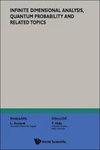激光传播模型的随机量化
IF 0.8
4区 数学
Q4 MATHEMATICS, APPLIED
Infinite Dimensional Analysis Quantum Probability and Related Topics
Pub Date : 2022-12-31
DOI:10.1142/s0219025723500108
引用次数: 0
摘要
本文提出了激光在湍流介质中传播建模中一些有趣的随机量子化数学问题。在一些典型的物理环境下,该问题可归结为具有高斯型、泊松型和利维型时空白噪声的随机薛定谔方程。我们通过随机量化来确定它们的数学分辨率。在有时空白噪声的聚焦情况下,克尔效应等非线性现象可以用随机非线性薛定谔方程来模拟。本文还给出了随机输运方程、Korteweg-de Vries方程以及其他一些具有时空白噪声的非线性波动方程的处理方法。主要技术是s变换(实际上我们将使用与之密切相关的Hermite变换),它将具有时空白噪声的随机偏微分方程转换为定义在hada - kondratiev白噪声分布空间上的确定性偏微分方程。然后利用s -变换/Hermite逆变换的表征定理,结合解析映射的无限维隐函数定理,建立了这类问题路径解的局部存在唯一性定理。由于湍流、电离层等离子体湍流、海洋层波动等实际情况导致传播介质的折射率在空间和时间上的波动较大,本文特别关注奇异白噪声分布。由于非线性波传播过程中出现的大量偏微分方程具有多项式型非线性,白噪声分布理论是研究这些受不同类型白噪声影响的问题的有效工具。本文章由计算机程序翻译,如有差异,请以英文原文为准。
Stochastic Quantization of Laser Propagation Models
This paper identifies certain interesting mathematical problems of stochastic quantization type in the modeling of Laser propagation through turbulent media. In some of the typical physical contexts the problem reduces to stochastic Schrodinger equation with space-time white noise of Gaussian, Poisson and Levy type. We identify their mathematical resolution via stochastic quantization. Nonlinear phenomena such as Kerr effect can be modeled by stochastic nonlinear Schrodinger equation in the focusing case with space-time white noise. A treatment of stochastic transport equation, the Korteweg-de Vries Equation as well as a number of other nonlinear wave equations with space-time white noise is also given. Main technique is the S-transform (we will actually use closely related Hermite transform) which converts the stochastic partial differential equation with space time white noise to a deterministic partial differential equation defined on the Hida-Kondratiev white noise distribution space. We then utlize the inverse S-transform/Hermite transform known as the characterization theorem combined with the infinite dimensional implicit function theorem for analytic maps to establish local existence and uniqueness theorems for pathwise solutions of these class of problems. The particular focus of this paper on singular white noise distributions is motivated by practical situations where the refractive index fluctuations in propagation medium in space and time are intense due to turbulence, ionospheric plasma turbulence, marine-layer fluctuations, etc. Since a large class of partial differential equations that arise in nonlinear wave propagation have polynomial type nonlinearities, white noise distribution theory is an effective tool in studying these problems subject to different types of white noises.
求助全文
通过发布文献求助,成功后即可免费获取论文全文。
去求助
来源期刊
CiteScore
1.50
自引率
11.10%
发文量
34
审稿时长
>12 weeks
期刊介绍:
In the past few years the fields of infinite dimensional analysis and quantum probability have undergone increasingly significant developments and have found many new applications, in particular, to classical probability and to different branches of physics. The number of first-class papers in these fields has grown at the same rate. This is currently the only journal which is devoted to these fields.
It constitutes an essential and central point of reference for the large number of mathematicians, mathematical physicists and other scientists who have been drawn into these areas. Both fields have strong interdisciplinary nature, with deep connection to, for example, classical probability, stochastic analysis, mathematical physics, operator algebras, irreversibility, ergodic theory and dynamical systems, quantum groups, classical and quantum stochastic geometry, quantum chaos, Dirichlet forms, harmonic analysis, quantum measurement, quantum computer, etc. The journal reflects this interdisciplinarity and welcomes high quality papers in all such related fields, particularly those which reveal connections with the main fields of this journal.

 求助内容:
求助内容: 应助结果提醒方式:
应助结果提醒方式:


